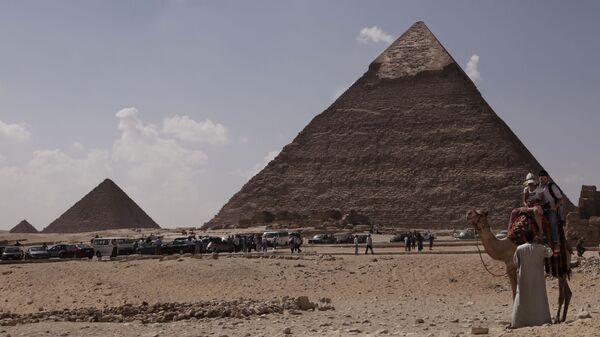A mural that has been recently discovered in an Egyptian temple sheds light on the Kingdom of "one of Israel's greatest enemies" – the Philistines, said Tom Meyer, professor of Bible studies at Shasta Bible College and Graduate School in California. According to Meyer, the 3,200-year-old mural gives an insight "into the fashion, employment, clothing, weaponry, instruments, modes of transportation and livestock of the Philistines".
Experts previously assumed that the Philistines, who engaged in bitter territorial disputes with the Israelites, could in fact be the Sea Peoples, a confederation of ancient nations that attacked ancient Egypt and other regions of the East Mediterranean between 1200-900 BCE.
The Medinet Habu temple was built in honour of Egyptian pharaoh Ramses III, who played a key role in defeating the Sea Peoples. Walls in the temple mention a people called Peleset, which some scientists identified as the Philistines.
Professor Tom Meyer says that the Philistines may not have been attempting to invade Egypt, but were instead seeking refuge.
"The other side of the story might be that the Sea Peoples were not trying to militarily invade Egypt but were forced to migrate from their islands because of a natural catastrophe and were only looking for a place to settle with their families on the Eastern Mediterranean Seaboard. Either way, the 3,200-year-old mural located on the northern outside wall of the temple was originally intended for propaganda and political purposes; it demonstrated the Pharaoh’s strength in defending the borders and thus preserving the traditional way of life in Egypt, conquering those who would illegally enter his country and sending them off to captivity", Meyer said.
The professor noted that the mural corroborates allegations made in the Bible that the Philistines were in the Eastern Mediterranean Seaboard at the beginning of the Iron Age - 1200 to 1000 BC.



